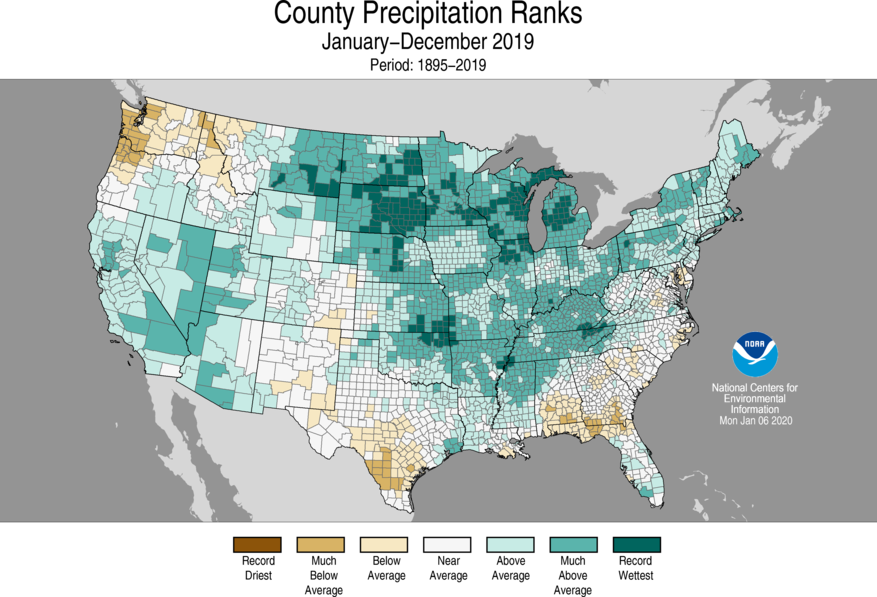Sunsettommy
Diamond Member
- Mar 19, 2018
- 15,339
- 12,923
- 2,400
Here is a quote from the ABSTRACT and from the post one article:
"The megadrought-like trajectory of 2000–2018 soil moisture was driven by natural variability superimposed on drying due to anthropogenic warming. Anthropogenic trends in temperature, relative humidity, and precipitation estimated from 31 climate models account for 47% (model interquartiles of 35 to 105%) of the 2000–2018 drought severity, pushing an otherwise moderate drought onto a trajectory comparable to the worst SWNA megadroughts since 800 CE."
and,
"In fact, the nearly-20-year drought is almost as bad or worse than any in the past 1,200 years, scientists say."
boldings mine
===
Both claims, the science paper and the Article completely ignored the NOAA Precititation data, which calls their claims baldfaced lies:
The 2000-2018 precipitation data from the NOAA shows ZERO drought at all, it is +.55/ decade wetter trend.
Why did you ignore this type of evidence, in post 65 where I showed very similar results?
That ALONE invalidated the stupid garbage paper!
Well first off...the NOAA source did not call it a bald faced lie. You did.
If there is no drought....then why are farmers and ranchers feeling the effects of it?
Deepening Drought In Western U.S. Costs Ranchers Money And Heartache

Texas cattle ranchers face tough decision to cull or sell herds as drought deepens
Cattle ranchers in Texas must choose between investing in more hay or culling herds amid a deepening drought. Ranches could take years to rebound.www.usatoday.com
The NOAA shows that 2018 was the one really dry year in the last 5 years, It was really dry in 2013, your article was vague on the information about actual precipitation data for the region.
Did you bother to see that photo in your link? it is a naturally low rain fall area, thus a drop will be felt deeply. I live in a similar region just north of him, where low rain fall makes agriculture a gamble, it needs irrigation to make it work. That man in the photo doesn't appear to have irrigation system to lean on, thus he WILL experience loss on a regular basis.
Evans is part cowboy, and all business. His profits are tied to rain and snow. Even in a good year, there's still little rainfall here — around 11 inches average.
That is skimpy rainfall, no wonder a single year drought will be deeply felt. The article was incomplete and misleading, he has a naturally small margin to work with, no wonder he is complaining when he gets a short term drought, that has largely gone away.
You keep ignoring the NOAA precipitation data over and over. They do make clear through the data, that calling the last 20 years is exceptional drought is a big lie:
You ignore this over and over, the lie is obvious when you look up the NOAA precipitation data that show an actual INCREASE in over all precipitation over the last 20 years.
From the published paper:
"In fact, the nearly-20-year drought is almost as bad or worse than any in the past 1,200 years, scientists say."
The NOAA shows different:
The 2000-2018 precipitation data from the NOAA shows ZERO drought at all, it is +.55/ decade wetter trend.
You have a choice, follow a paper that makes lies based on models, or follow the actual data from the NOAA.
:max_bytes(150000):strip_icc()/GettyImages-1352207233-9ebe3cab7b41498aa60a1fbcc4ca42c5.jpg)
